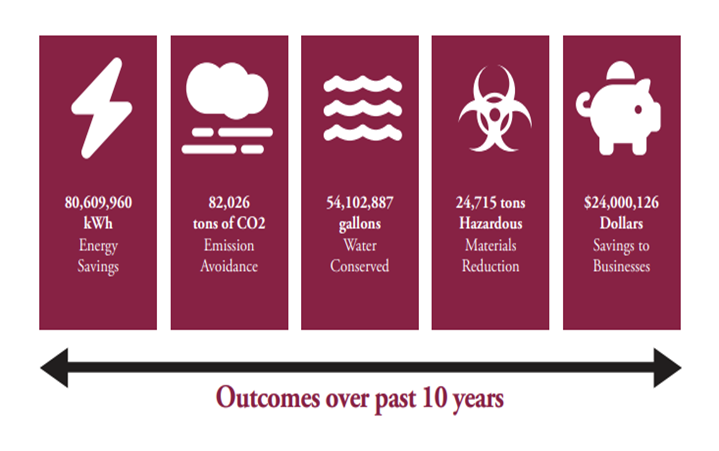Energy Efficiency
The Office of Outreach at the NMSU College of Engineering helps New Mexico companies cut costs while protecting the environment. All at no cost to the business. Our expert team takes a deep dive into your current operations to uncover practical, cost-saving strategies that reduce waste, lower water use, and improve energy efficiency.
Helping Your Business Save Energy and Cut Costs
We offer no cost, on-site energy efficiency assessments to help your business lower utility expenses and operate more efficiently. Our team partners with businesses to identify opportunities to reduce energy consumption, minimize environmental impact, and explore renewable energy solutions where they’re most effective.
Our goal is to build lasting relationships that support long-term energy savings and encourage environmental responsibility by strengthening economic growth. Your business can connect with available incentives and programs through utility providers and government agencies to upgrade to renewable energy sources.
It’s expert guidance, real savings, and no cost, so your business can have a more sustainable future.
Why Energy Efficiency Matters for Your Business
Improving energy efficiency isn’t just good for the environment—it’s smart business. By using less energy, your company can lower utility bills, reduce operating costs, and improve overall performance. Energy-efficient practices also show your commitment to sustainability, which can strengthen your brand and appeal to customers who value environmental responsibility. Whether you're a small business or a large organization, investing in energy efficiency is a simple way to reduce costs and reduce your environmental impact.
Energy efficiency is a smart way for businesses to boost performance, while enhancing sustainable business operations. Businesses benefit by practicing energy-efficient practices by:
- Saving money on utility costs
- Reducing energy consumption
- Minimizing carbon footprints
- Improving overall performance
- Boosting long-term financial savings
- Reducing greenhouse gas emissions
- Preventing pollution and protecting ecosystems
- Driving innovation to become more environmentally conscious
By cutting down on energy use, companies can save money, while reducing their environmental impact.
Who qualifies to get an assessment?
All New Mexico locally owned businesses can schedule an assessment with the Office of Outreach at the College of Engineering at New Mexico State University.
To schedule an assessment, call (575) 646-4034.
Our Las Cruces based energy efficiency team.
